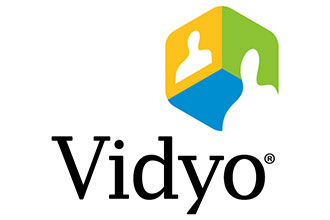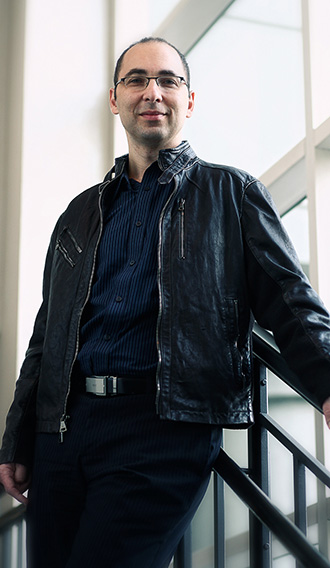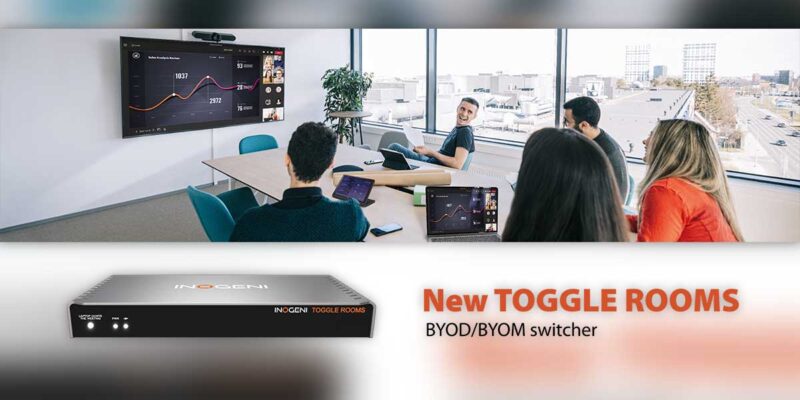Disruptive Forces: The Leaders Speak – Ofer Shapiro, Vidyo
 Profile: Ofer Shapiro, Vidyo co-founder and CEO, has been an innovative force at the heart of major architectural transformations in the videoconferencing industry since 1996 and led the successful commercialization and go-to-market strategies. Vidyo is a 300-person company with worldwide sales to the leading enterprise, service providers and vertical solution providers.
Profile: Ofer Shapiro, Vidyo co-founder and CEO, has been an innovative force at the heart of major architectural transformations in the videoconferencing industry since 1996 and led the successful commercialization and go-to-market strategies. Vidyo is a 300-person company with worldwide sales to the leading enterprise, service providers and vertical solution providers.
Ofer’s backstory: Ofer was integrally involved in the development of the first H.323 multi-point control unit architecture and gatekeepers, developed the use of Scalable Video Coding (SVC) for video conferencing, and led the development of a new media relay based architecture — the VidyoRouter. He holds an Master’s of Science in applied physics and is a named inventor on 47 issued patents. He was named a World Economic Forum Technology Pioneer, and received the Wall Street Journal Innovation Award for Disruption in the category of Internet, Networking and Broadband.
I would like to thank Vidyo CEO Ofer Shapiro for participating in this next series on Disruptive Forces in AV/IT.
CM: Ofer, thank you very much for joining us today. Tell us about your personal journey with Vidyo.
 OS: The ability to bring human interaction into any workflow or business setting has always been of high interest to me. I was part of creating the first generation IP based video communication tools. About ten years ago I realized that existing architectures would not scale. There were two fundamental roadblocks: the ability to use the open Internet and wireless networks while maintaining transmission quality and the server infrastructure needed to deliver a high-quality, affordable, multi-party experience at scale. I soon realized that to have a truly scalable experience that would create mass adoption and bring true face-to-face connections and seamless communication into the hands of everybody – meant the need for a new type of architecture- one that omitted the use of hardware based MCUs and the “QoS addiction.” This notion, promoted by the networking companies, suggests networks should be re-done for the applications, rather than that the applications should work on any network. It was time to think about the problem in a new way! With a team of experts, Vidyo thought of the best way to solve the problem. In only four months a prototype was born. The only thing left was to convince the rest of the industry that the world is indeed round. Initially most people thought the idea was ridiculous and it took several strategic deals with the world’s most respected companies such as Google, Ricoh, Hitachi and others to legitimize this novel approach.
OS: The ability to bring human interaction into any workflow or business setting has always been of high interest to me. I was part of creating the first generation IP based video communication tools. About ten years ago I realized that existing architectures would not scale. There were two fundamental roadblocks: the ability to use the open Internet and wireless networks while maintaining transmission quality and the server infrastructure needed to deliver a high-quality, affordable, multi-party experience at scale. I soon realized that to have a truly scalable experience that would create mass adoption and bring true face-to-face connections and seamless communication into the hands of everybody – meant the need for a new type of architecture- one that omitted the use of hardware based MCUs and the “QoS addiction.” This notion, promoted by the networking companies, suggests networks should be re-done for the applications, rather than that the applications should work on any network. It was time to think about the problem in a new way! With a team of experts, Vidyo thought of the best way to solve the problem. In only four months a prototype was born. The only thing left was to convince the rest of the industry that the world is indeed round. Initially most people thought the idea was ridiculous and it took several strategic deals with the world’s most respected companies such as Google, Ricoh, Hitachi and others to legitimize this novel approach.
Today Vidyo offers the worlds most advanced platform for video, audio and content communication and collaboration with a rich suite of APIs so that the highest quality real-time communication can be embedded into any application, web portal or device. Our patented dynamic adaptation technology implemented in our VidyoRouter media server ensures consistent high quality experiences over variable networks like the Internet and wireless, so the traditional barrier of access goes away.
Through Vidyo’s patented, scalable and affordable technology, visual communications is seeing wider adoption, not just in the enterprise but within verticals where applications are being built from the ground up through the VidyoWorks platform. Our platform is being embedded into workflows to create more effective visual collaboration into the home and beyond. This is critical especially today in the era of the Internet of Things where the need for human interaction will be inevitable. Vidyo believes that it will drive the human interaction piece in IoT – the people to people interaction.
CM: Can you give us your perspective on the current state of AV/IT convergence?
OS: Our industry is in the process of reinventing itself. Vidyo sees application and software level convergence as unified communication meets work flow integration and B2C applications. Vidyo also sees network convergence as enterprise networks meet with private and public clouds and as traditional standards such as H.323/SIP/H.264, H.265 and WebRTC coincide.
Maybe most importantly Vidyo sees room solutions morphing into software deployments that integrate with mobile. Through the VidyoWorks platform customers are able to drive all of these transitions; offering new applications along with investment protection while still leveraging mobile and cloud for new revenue streams.
CM: How do you see cloud-driven strategies as being beneficial for your partners as well as the enterprise?
OS: Cloud is all about greater efficiencies, reducing capital costs, and creating a new economy. Our partners benefit from being able to introduce and implement their applications in a way that can reduce their time to market and increase sales velocity. As an example, Vidyo has many partners that have put Vidyo in their cloud and are now introducing a Video Conferencing as a Service offering or embedded in another application. They are able to introduce these new services to their customers via trials in a matter of minutes, and once the trial period has expired can instantly convert that trial account to a live account and start generating revenue. This also introduces self service options as well, where this process can also be completely managed by the customer. Additionally, our partners that have embraced cloud strategies can adopt new capabilities from third parties that also have cloud offerings. This drives new services into the market in a much easier fashion than traditional on premise product offerings. These new services can also be offered at a subscription business model. This provides a reoccurring monetization event that provides a more self sustaining and predictable revenue projection for a longer term.
Another interesting trend that we see with large enterprise is private cloud. Using cloud-based tools to achieve economy of scale for their deployments while maintaining the private nature of the deployment and specific security concerns as well as network optimizations are all advantages to this approach. Our platform is unique in it’s private /public cloud deployment optionalities.
Ultimately, cloud strategies are driving innovation for the end consumer of those enterprises. New cloud based tools are becoming more readily available that can be used for enhancing the customer experience. This can include anything from providing a “Click to Call” button on a website or mobile device that can then routed to a customer service agent, a SME, or crowd sources. This can also be used for improving specific industry vertical solutions, such as TeleHealth for real-time patient monitoring and virtual Doctors visits, to Field Services around “See What I See” back to an SME at the main office.
The key to these new cloud based tools is the simplicity in which one can access and consume them. This type of model is creating a new ecosystem for others and us. Vidyo believes this is the future, this is what will enable all these connected devices as part of the IoT and Vidyo is excited to be part of this.
CM: With the escalating usage of mobile devices as well as BYOD programs in the enterprise, how do you see your application(s) fitting within that structure?
OS: BYOD programs and the growing compute power seen with every new generation of mobile device introduced to the market gives the consumer the choice to tailor their own technology experience and consumption – and that’s great news for Vidyo! Vidyo has always worked on standard hardware and because of our software based VidyoWorks platform, it takes virtually no time to get up and running on any mobile device, PC, laptop or operating system. Just recently when Apple announced the availability of the 27” iMac with Retina 5K display, Vidyo saw an opportunity to innovate and once we had the product in hand, it was only hours before we experienced the world’s first 5K video conference! BYOD is putting the power back into the hands of the consumer, creating new paradigms and choices for the enterprise and IT.
CM: Any last words for your partners as well as the rest of the industry?
OS: Vidyo works with some of the most innovative companies on the planet that are envisioning and implementing new applications for visual communications through the VidyoWorks platform. The realm of face-to-face communications is reaching a whole new dimension. Vidyo’s technology has been selected by some of the largest names in healthcare, ICT, banking and Government organizations in the world. We are seeing real life video applications in everything from tele-ICUs — that allow for wider patient access to care to banking where institutions are providing real-time face-to-face video interaction to promote and secure customer loyalty. Research organizations are connecting hundreds of scientists at a time, across the globe for critical scientific project collaboration and humanitarian organizations are making a difference where it’s needed most by providing assistance to the World’s poorest nations. All of this is being done through the power of Vidyo. Visual communications is no longer a hurdle – it is here and now and the possibilities are endless. We are grateful to our partners and customers that have joined us on this journey, and it’s just beginning.





